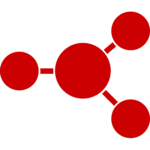Project 2
Uncovering the mechanisms of PFAS-induced immunotoxicity
Co-Investigators: Jamie DeWitt, Seth Kullman, Jeffrey Yoder
Chronic diseases are the leading cause of death worldwide, and the interconnectivity of immune dysfunction with environmental factors is an underlying basis for many of these diseases. Immunosuppression, a form of immune dysfunction, is known to increase chronic disease risk. Explaining the contribution of environmental factors to immunosuppression is a critical tool for assessing risks to human health presented by exposure to hazardous substances. The proposed research will work closely with other Projects and Cores within this Superfund Program (SRP) Center to investigate mechanisms by which environmentally relevant concentrations of per- and polyfluoroalkyl substances (PFAS) suppress immune function. Experimental PFAS exposures will be informed by levels measured in drinking water, human serum, and bioaccumulation potential in ecologically relevant models generated by Projects 1, 3, and 4 of this proposed Center.
PFAS are a class of over 5,000 unique chemicals. They are manufactured compounds developed to make consumer and industrial products more water, stain, and grease resistant. PFAS are resistant to degradation, move easily throughout environmental media, and accumulate in living organisms. Their widespread use in myriad products and subsequent presence in the environment has led to human exposure through drinking water, food, air, and dermal contact. While multiple lines of evidence and combined data from numerous studies of individual PFAS build a case of biological plausibility for health effects in exposed humans, specific mechanisms by which they induce toxicity are largely unknown. Humans and experimental animals experience immunosuppression following exposure to select PFAS. Our preliminary data with mouse models verifies observations in exposed humans that the adaptive immune system has dampened vaccine responses. Our preliminary data with zebrafish (Danio rerio) models and human cell lines indicate that exposure also modulates reactive oxygen species (ROS) production, which is critical for immune responses in both the adaptive and innate immune systems – alterations in ROS production indicate that PFAS exposure disrupts basic bioenergetic functions. PFAS also modulate glycolytic and oxidative metabolic functions that likely modify ROS generated by mitochondrial respiration. When cellular metabolism is modified during events with intense energy demands, such as when B cells transition to plasma cells and begin secreting antibodies or when neutrophils rapidly migrate to sites of infection or damage, the result likely suppresses a protective response. Importantly, PFAS exposure leads to reduced phagocytosis by macrophages. However, mechanisms for immunosuppression by PFAS have not yet been elucidated and likely differ based on chemical structure and target cell identity. Therefore, this project will define the relationship between environmentally relevant and chemically diverse PFAS, immune suppression, and cellular bioenergetics, providing critical information for protecting public health from immune-related risks associated with exposure.
Our central hypothesis is that PFAS-mediated immune suppression results from modulation of immune cell bioenergetic functions. We will test this hypothesis in the following two specific aims:

Specific Aim 1. Quantify the impact(s) of PFAS exposure on B cell development and antibody production.
Aim 1A: B cells from antigen-immunized mice exposed to six different PFAS in vivo will be enumerated with flow cytometry to characterize B cell subclasses. Aim 1B: PFAS and antigen-exposed B cells will be stimulated to ascertain changes in proliferation, differentiation, antibody production, and bioenergetics to identify B cell signaling pathways \ impacted by PFAS exposure that suppress adaptive immune function.

Specific Aim 2. Quantify the impact(s) of PFAS exposure on phagocytotic cell function.
Phagocyte functional assays, including ROS production and phagocytosis, will be performed in zebrafish embryos and human cells following exposure to six different PFAS to determine the effects of exposure on innate immune suppression. The impact of exposure on phagocyte energy utilization will be assessed along with changes in the transcriptome to identify common or divergent signaling pathways that impact phagocyte function.
Together, these aims will improve our understanding of mechanisms by which PFAS impair adaptive and innate immunity and provide a framework for future studies on immune-specific, PFAS-mediated signaling pathways. We will provide novel mechanistic data for read-across to predict the ability of different sub-classes of PFAS to induce immunosuppression, which is a robust predictor of the risk of adverse health outcomes in PFAS-exposed human populations. This data will identify impacted signaling pathways that will accelerate development of immune therapies for affected individuals, inform appropriate regulatory measures, and facilitate novel, immune mechanism-based prioritization strategies for PFAS recently detected in North Carolina and elsewhere.
